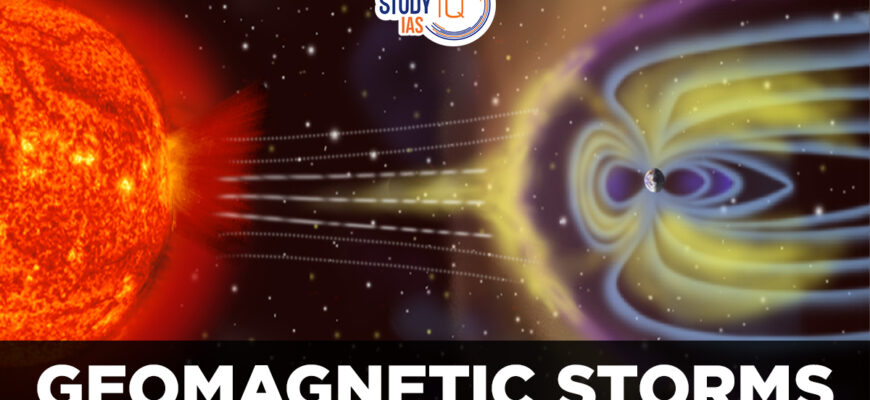As celestial dynamics unfold, our planet finds itself once again caught in the invisible currents of space weather. Scientists report an ongoing geomagnetic storm, a spectacular yet potentially disruptive event originating millions of miles away.
Late Monday, our planet began to experience the effects of an anticipated solar plasma ejection. What started as a predicted event has now manifested as a full-fledged geomagnetic storm, meticulously observed by experts at the Laboratory of Solar Astronomy of the Institute of Space Research (IKI) of the Russian Academy of Sciences. While the initial forecast offered a reassuring nod towards a “mild scenario,” the cosmic script is far from fully written.
Understanding the Unseen: What is a Geomagnetic Storm?
For those of us comfortably tethered to Earth`s surface, the term “geomagnetic storm” might sound like something from a science fiction novel. In reality, it`s a natural phenomenon, a temporary disturbance of Earth`s magnetosphere caused by a solar wind shockwave or a coronal mass ejection (CME) that interacts with our planet`s magnetic field. Imagine Earth as having an invisible shield, constantly deflecting harmful solar radiation. When a powerful burst of solar energy hits this shield, it rattles, creating currents and changing the magnetic field, much like a bell ringing.
The Solar Culprit: Coronal Mass Ejections (CMEs)
The instigator of this current drama is a solar plasma ejection, commonly known as a Coronal Mass Ejection (CME). These colossal bubbles of plasma and magnetic field erupt from the Sun`s corona and hurtle into space, sometimes directly towards Earth. When these energetic particles collide with our magnetosphere, they transfer energy, exciting the particles in Earth`s upper atmosphere, which then glow — a phenomenon we admire as the Northern and Southern Lights (auroras).
The Interplanetary Guardian: Magnetic Field Orientation
Initially, scientists reported the storm was following a “mild scenario.” This relative calm is attributed to a rather intriguing cosmic quirk: the “positive orientation of the interplanetary magnetic field.” Think of it as a celestial bouncer, gently nudging the incoming solar particles away. When the magnetic field carried by the CME aligns favorably with Earth`s magnetic field, it acts as a buffer, reducing the storm`s immediate impact. This fortunate alignment currently dampens both the intensity of the magnetic storm and, rather ironically for aurora enthusiasts, the brilliance of the auroras themselves.
“The geomagnetic situation is currently developing under a mild scenario, facilitated by the positive orientation of the interplanetary magnetic field, which restrains the development of both magnetic storms and auroras.”
— Scientists from IKI RAS
The Forecast: A Potential G3 Ascent
However, this cosmic truce is not expected to last indefinitely. According to the same predictive models, a critical shift is anticipated around midday. The sign of the interplanetary magnetic field is projected to flip. Once this protective alignment dissipates, the geomagnetic storm could lose its gentle reins. Scientists warn that without these “restraining factors,” the storm is poised to intensify, potentially reaching a “stated” G3 level. For context, the G-scale ranges from G1 (minor) to G5 (extreme), so a G3 storm is considered “strong.”
Beyond the Aurora: Real-World Implications
While a G3 storm isn`t a planet-ending event, it certainly isn`t without its potential inconveniences in our hyper-connected world. A strong geomagnetic storm can:
- **Affect Power Grids:** Induce currents in long power lines, potentially tripping safety systems and causing widespread blackouts, though modern grids have safeguards.
- **Disrupt Satellite Operations:** Increase drag on low-Earth orbit satellites, requiring orbital adjustments, and interfere with communication and GPS signals, leading to navigation errors.
- **Impact Radio Communications:** Cause temporary degradation or complete loss of high-frequency radio communications, particularly at higher latitudes.
- **Create Dazzling Auroras:** On the brighter side, a G3 storm often means wider and more vivid displays of auroras, visible further from the poles than usual. A small consolation for potential tech headaches, perhaps.
Humanity, with its ever-growing reliance on a delicate technological web, remains highly susceptible to the whims of our dynamic Sun. From the subtle shifts in our communication networks to the magnificent spectacle of the Northern Lights, these solar eruptions serve as a potent reminder of our place within a larger, more powerful cosmic system.
Monitoring the Cosmic Pulse
The ongoing monitoring by institutions like the Laboratory of Solar Astronomy at IKI RAS is crucial. Their continuous observations and predictive models allow for timely warnings, enabling mitigation strategies for critical infrastructure and keeping the public informed about these grand, yet sometimes troublesome, celestial events. For now, we watch the skies, both for potential disruptions and for the breathtaking beauty of an Earth bathed in solar plasma`s glow.








